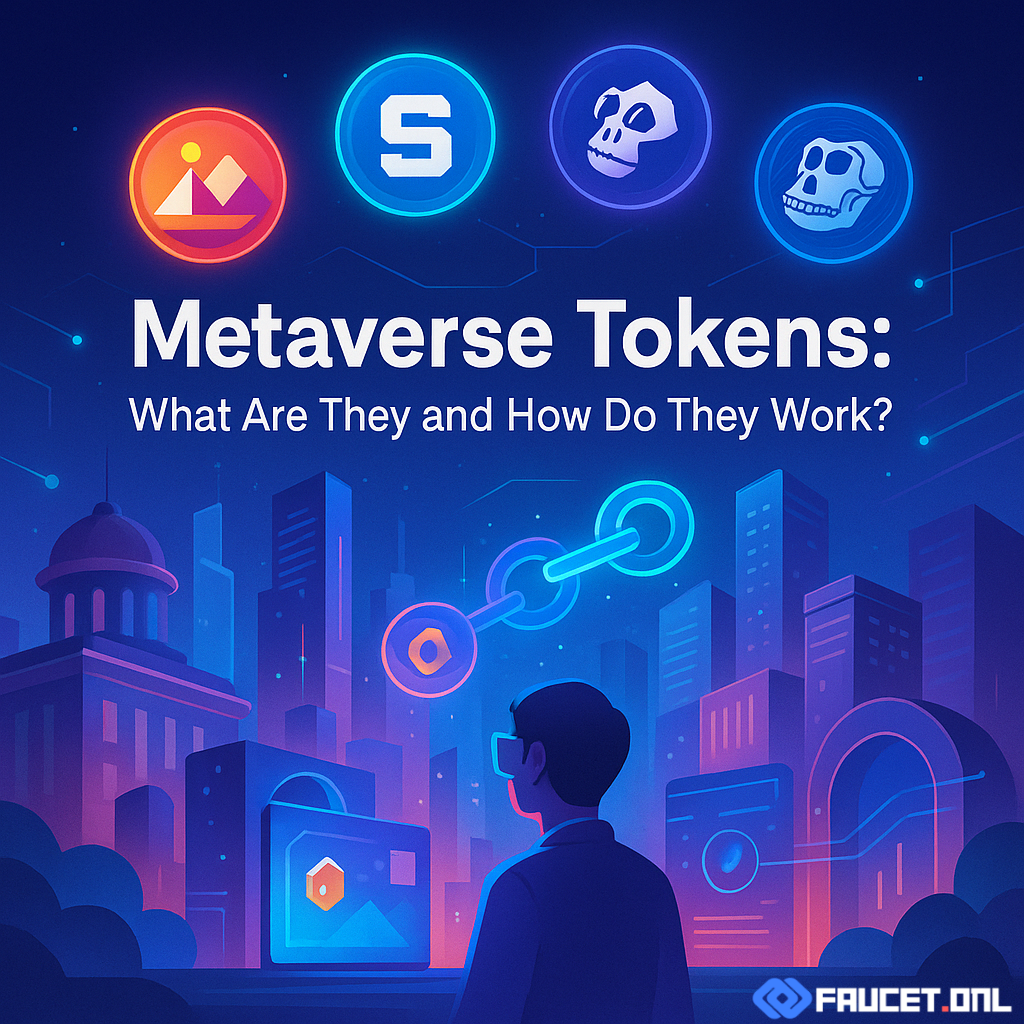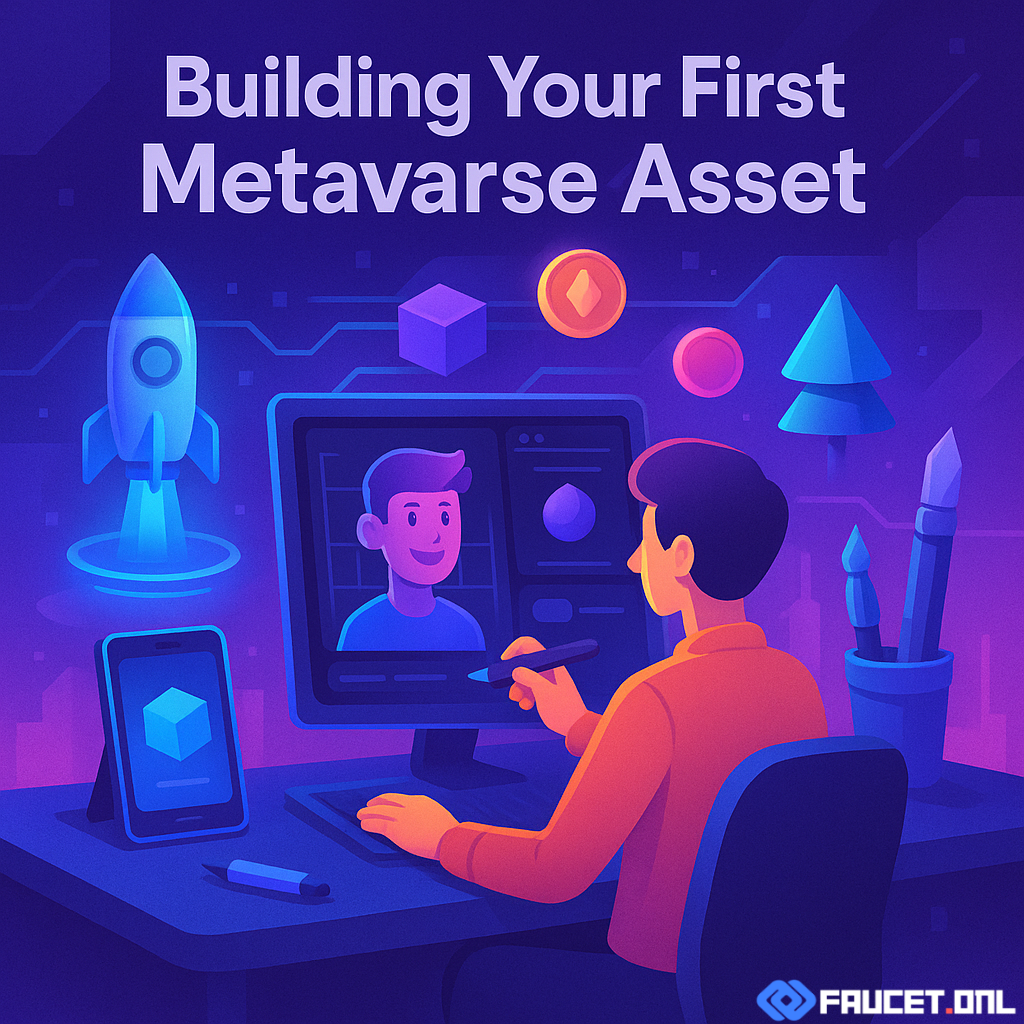Metaverse Tokens:
The Building Blocks of Virtual Economies
Metaverse tokens are digital assets designed to facilitate transactions, governance, and incentives within virtual worlds. They operate as the native currency of metaverse platforms, enabling users to buy virtual land, goods, avatars, access premium experiences, and participate in decentralized governance. Unlike in-game currencies confined to a single application, metaverse tokens are typically issued on public blockchains, making them tradeable, interoperable, and accessible on crypto exchanges.
Metaverse tokens underpin the economic fabric of digital ecosystems, fostering real value exchange between users, developers, and investors. They support decentralized ownership and align incentives among stakeholders, powering everything from creator economies to play-to-earn gaming and virtual real estate.
How They Work: Technical and Economic Foundations
Most metaverse tokens are built as ERC-20 or similar standards on blockchains like Ethereum, Solana, or Polygon. Their supply, distribution, and functionality are governed by smart contracts—self-executing programs that manage token minting, burning, transfers, and staking. Here’s how they function:
- Medium of Exchange: Users buy, sell, and trade virtual assets (land, wearables, NFTs) using metaverse tokens as the primary currency.
- Governance: Many tokens serve as governance tokens, granting holders voting rights over protocol upgrades, platform rules, or community grants.
- Incentives: Tokens reward users for contributions—playing games, creating content, hosting events—aligning platform growth with participant rewards.
- Staking & Yield: Investors can stake tokens to earn passive income, provide liquidity, or participate in special platform features.
- Interoperability: Some tokens work across multiple virtual worlds or can be bridged to other chains, expanding their utility beyond a single platform.
Tokenomics—how tokens are distributed, vested, and utilized—plays a crucial role in their long-term value and stability. Well-designed token economies balance utility, scarcity, and incentives to drive sustainable platform growth and attract both users and investors.
Top Tokens: Leading the Metaverse Economy
Several metaverse tokens have established themselves as key players in the digital asset landscape. As of 2025, notable tokens include:
- MANA (Decentraland): Powers a user-owned virtual world where land, art, and experiences are bought and sold with MANA. Also used for governance.
- SAND (The Sandbox): The native token of The Sandbox, used for purchasing land, assets, and participating in the platform’s DAO governance.
- AXS (Axie Infinity): Central to the Axie Infinity ecosystem, AXS is used for breeding, governance, and staking, aligning incentives for players and investors.
- APE (ApeCoin): Fuels the Bored Ape Yacht Club metaverse, supporting digital commerce, DAO voting, and ecosystem growth across multiple applications.
- RPL (Render): Powers decentralized rendering for 3D content, crucial for metaverse experiences and virtual production.
- Others: Tokens like GALA, ENJ (Enjin), and ILV (Illuvium) support various gaming and creator-centric metaverse platforms, each with unique economic models and communities.
Top tokens are typically traded on major exchanges and have active governance structures, developer support, and engaged user bases, all contributing to their resilience and growth.
Risks: What Investors Should Watch For
Metaverse tokens offer significant upside but come with distinct risks:
- Volatility: Prices can be highly volatile, influenced by platform updates, crypto market trends, or shifts in user engagement.
- Smart Contract Vulnerabilities: Bugs or exploits in token or platform code can lead to loss of funds or manipulation.
- Platform Dependence: Tokens tied to a single metaverse rise or fall with that platform’s success or failure.
- Regulatory Uncertainty: Evolving legal frameworks may affect how tokens are classified, taxed, or traded, adding compliance risks.
- Illiquidity: Some tokens, especially from smaller or new projects, may have low trading volumes, making them hard to buy or sell at fair value.
Thorough research, technical due diligence, and portfolio diversification are essential for navigating the risks in this fast-moving sector.
Tips: Investing in Metaverse Tokens Like a Pro
Maximize your investment success with these best practices:
- Study Tokenomics: Analyze supply, utility, vesting schedules, and incentive structures to gauge a token’s long-term potential.
- Assess Platform Fundamentals: Check user adoption, developer activity, and ecosystem partnerships to ensure lasting value.
- Diversify: Avoid concentrating your investment in a single token or platform; spread risk across several quality projects.
- Stay Updated: Follow platform updates, governance proposals, and metaverse trends to react quickly to new developments.
- Secure Your Assets: Use reputable wallets, enable two-factor authentication, and never share your private keys.
With technical insight and disciplined strategy, investors can position themselves to benefit from the rise of metaverse economies while managing exposure to risk.
Conclusion: The Future of Digital Economies
Metaverse tokens are driving the convergence of virtual and real economies, enabling new business models, communities, and creative frontiers. For investors, understanding their technical and economic foundations is key to unlocking opportunity in this dynamic space. The metaverse is still evolving—staying informed and proactive will be your greatest advantage.



